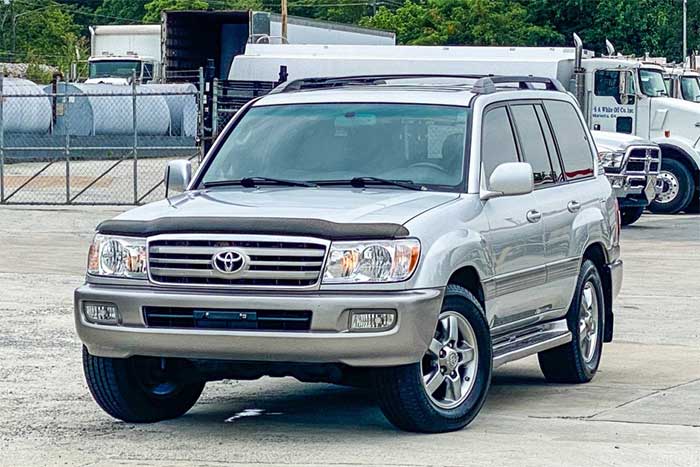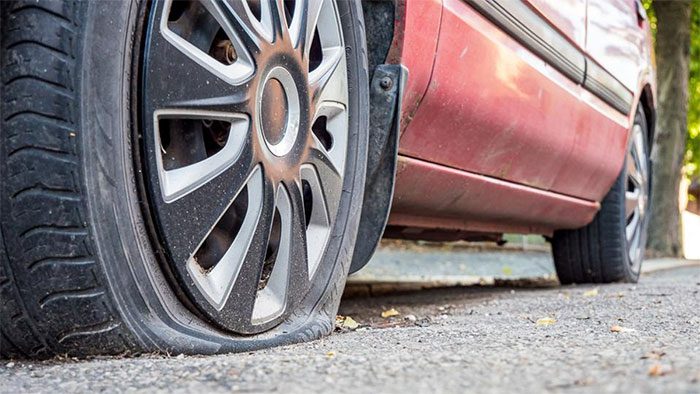For high-riding SUV models, driving at speeds over 80 km/h can lead to tire blowouts, which may result in vehicle rollovers, primarily due to loss of control when the vehicle sways.
The Older the Vehicle, the Higher the Risk
Newer vehicle models are equipped with comprehensive electronic safety systems, allowing drivers to manage tire blowouts at high speeds more effectively. However, older vehicles, lacking many safety features or having non-functional systems, can pose deadly risks in such situations.
Specifically, when a car suddenly experiences a tire blowout, especially on the highway, it can become very unstable and difficult to control. In modern vehicles, safety systems such as Electronic Stability Program (ESP), rollover prevention, and traction control intervene to help quickly regain balance, allowing drivers to manage and safely stop the vehicle.
The first instinctive reaction for many drivers when a tire blows out is to slam on the brakes to stop the vehicle quickly. This is extremely dangerous, particularly if the blowout occurs while driving at high speeds or on the highway. Sudden braking can cause the vehicle to tilt, lose balance, and traction, leading to a rollover. This situation is commonly encountered with high-riding vehicles like SUVs, crossovers, and pickup trucks. When braking hard with one tire blown, the remaining tires may lose traction, slide, and lead to loss of control, causing the driver to steer left or right repeatedly, resulting in collisions with obstacles such as curbs, ditches, or other vehicles, ultimately leading to a rollover.

High-riding SUVs, like the 2007 Toyota Land Cruiser, lack electronic safety systems like ESP or traction control, making them prone to loss of control and rollover during high-speed tire blowouts.
Older vehicles often lack supportive safety features, have smaller wheel sizes, and thicker tires. Maintaining a straight and balanced driving state during a high-speed tire blowout heavily depends on the driver’s skill and a bit of luck.
For low-center-of-gravity sedans, if a tire blows and the driver loses control, the vehicle is less likely to roll over unless impacted by another force during the slide, such as hitting a curb or other moving vehicles. These vehicles may spin but are less prone to rollover. In contrast, crossovers, especially SUVs and pickup trucks with higher centers of gravity, are more likely to roll over upon losing control, even without hitting any other obstacles.
Thus, combining several “negative” factors such as a high-center-of-gravity SUV, an older vehicle lacking electronic safety features, driving at high speeds, and experiencing a sudden tire blowout on the highway makes rollovers very likely. If passengers inside are not wearing seat belts, a rollover can eject them from the vehicle, posing severe risks to their lives.
The Importance of Tires
According to many experts, when vehicles travel on highways, the high road friction combined with high speeds generates significant heat, causing air inside the tires to expand, which can lead to tire failures. Old, weak, or low-quality tires are more susceptible to blowouts when driving on the highway.

Tires should be replaced after 50,000 km or five years of use to minimize risks on the highway.
It is noteworthy that despite the increasing occurrences of tire blowout accidents, many vehicle owners still do not pay sufficient attention to this hidden danger. Experts recommend replacing each tire after 40,000 to 50,000 km or approximately every 4-5 years. However, many owners continue to use tires that still have tread visible. Even if the tread is not worn down significantly, natural aging inside the tire has already reduced its load-bearing capacity. Additionally, regular monitoring of tire pressure is essential. To facilitate monitoring, tire pressure sensors can be installed if the vehicle is not already equipped with them.
Moreover, during use, many vehicle owners neglect to check their tires, allowing them to be under-inflated or over-inflated, which accelerates tire degradation. Especially in conditions where Vietnam’s roads are still quite poor and the hot season is approaching, the risk of accidents from tire blowouts increases significantly.
Therefore, vehicle owners should prioritize tire maintenance and enhance their knowledge about tire usage to prevent tragic accidents. Regular checks, maintenance, and tire rotations are recommended. If the tires are worn, they should be replaced rather than trying to continue using them, as this can be very dangerous.





















































